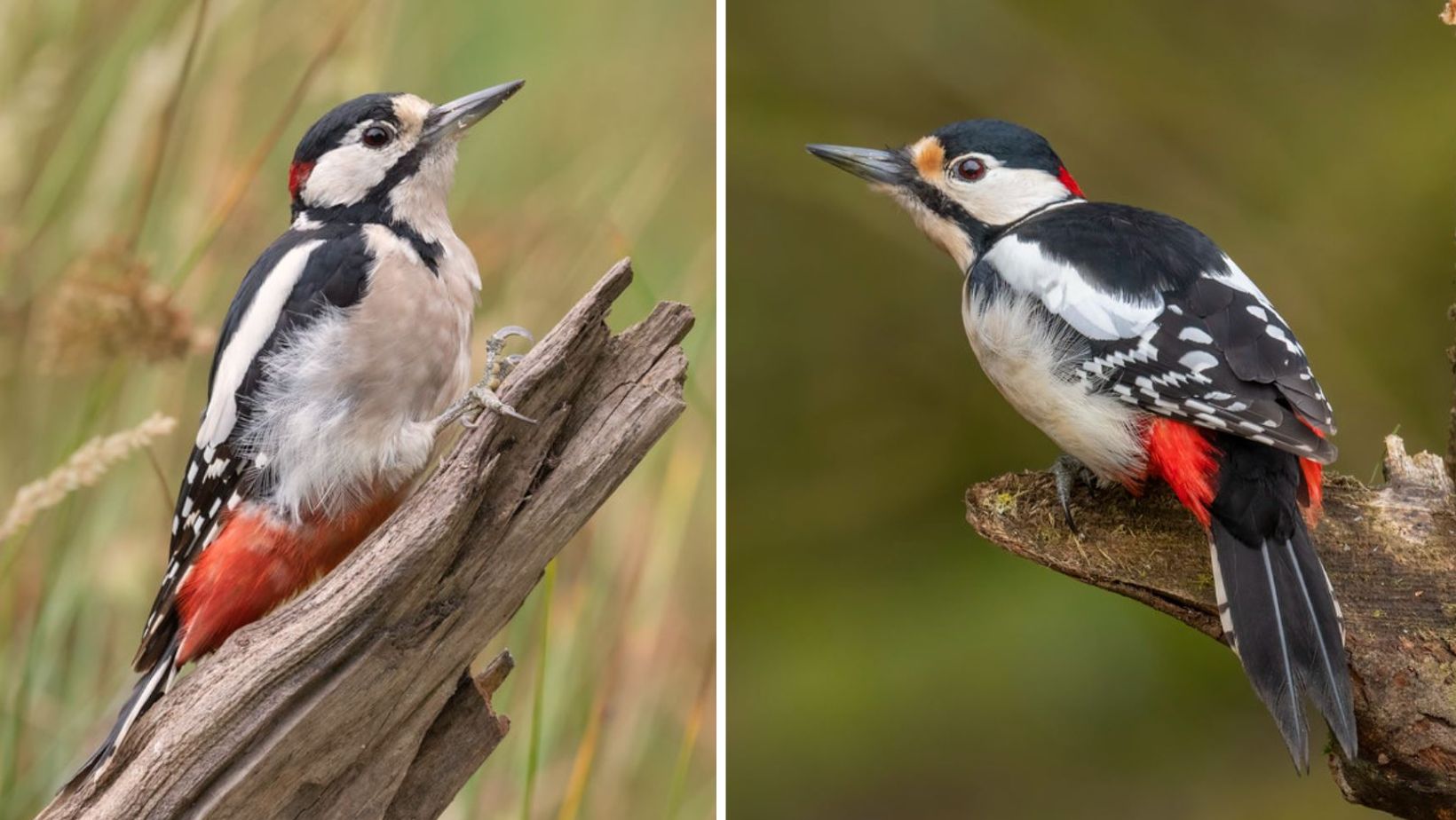
Big wide shoulder patches combine with a perfectly placed red nape patch, blue-black back, and bright red vent!
Meet the Great Spotted Woodpecker
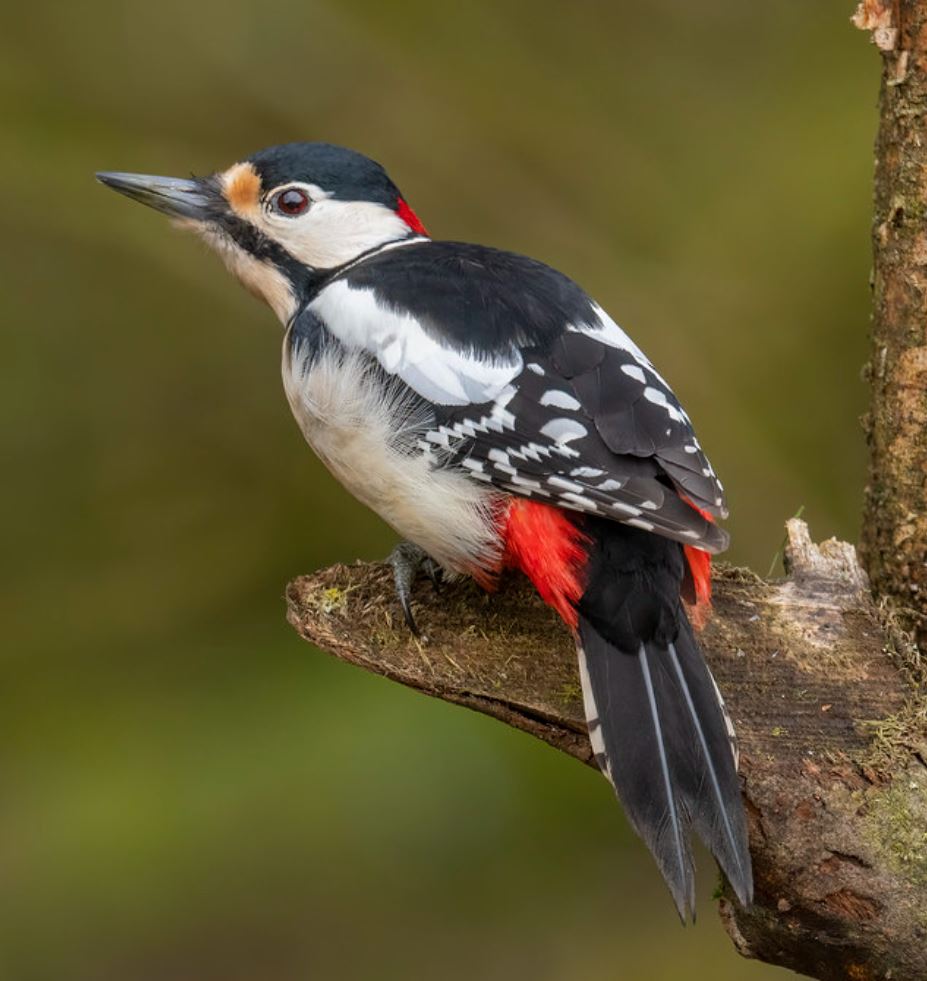 “Great Spotted Woodpecker – Dendrocopos major” (cropped) by cazalegg is licensed under CC BY 2.0.
“Great Spotted Woodpecker – Dendrocopos major” (cropped) by cazalegg is licensed under CC BY 2.0.
The Great spotted woodpecker (Dendrocopos major) is a medium-sized woodpecker widely distributed across the Palearctic, including parts of North Africa. The Great spotted woodpecker’s upperparts exhibit a glossy blue-black color, with white patches on the sides of the face and neck. Black lines run from the shoulder to the nape, base of the bill, and halfway across the breast. It features a large white shoulder patch, while the flight feathers and tail display black and white bars. The underparts are mostly white, except for a striking scarlet lower belly and undertail.
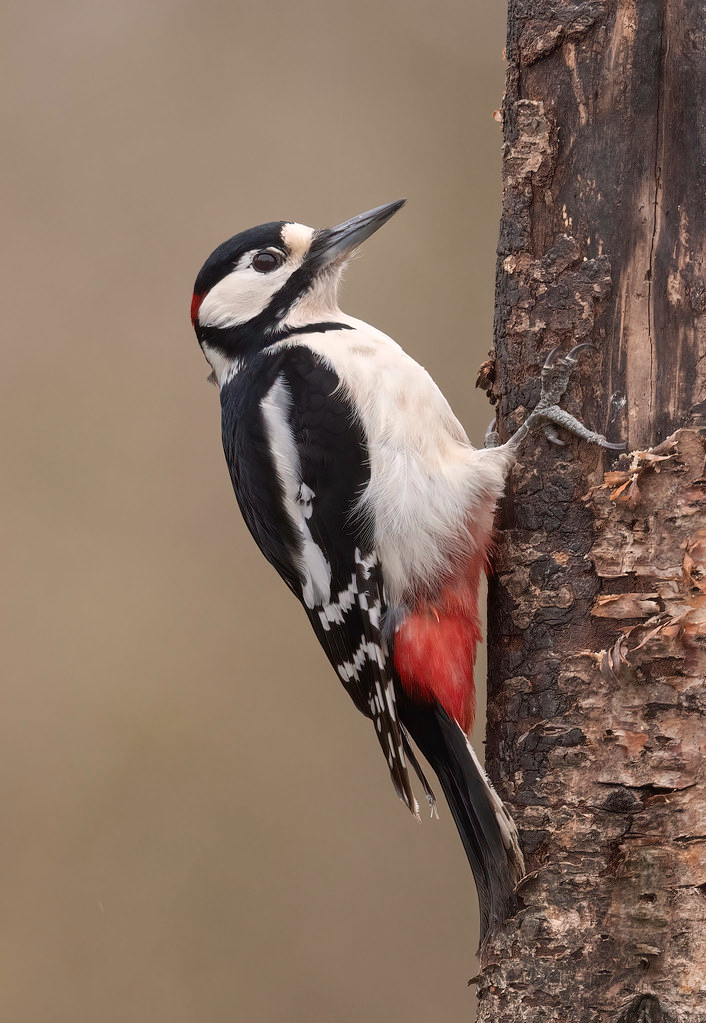 “Great Spotted Woodpecker – Dendrocopos major” by cazalegg is licensed under CC BY 2.0.
“Great Spotted Woodpecker – Dendrocopos major” by cazalegg is licensed under CC BY 2.0.
Males possess an additional crimson patch on the nape, distinguishing them from females.
Juveniles have a less glossy appearance, with brownish tones in their upperparts and a pink lower belly.
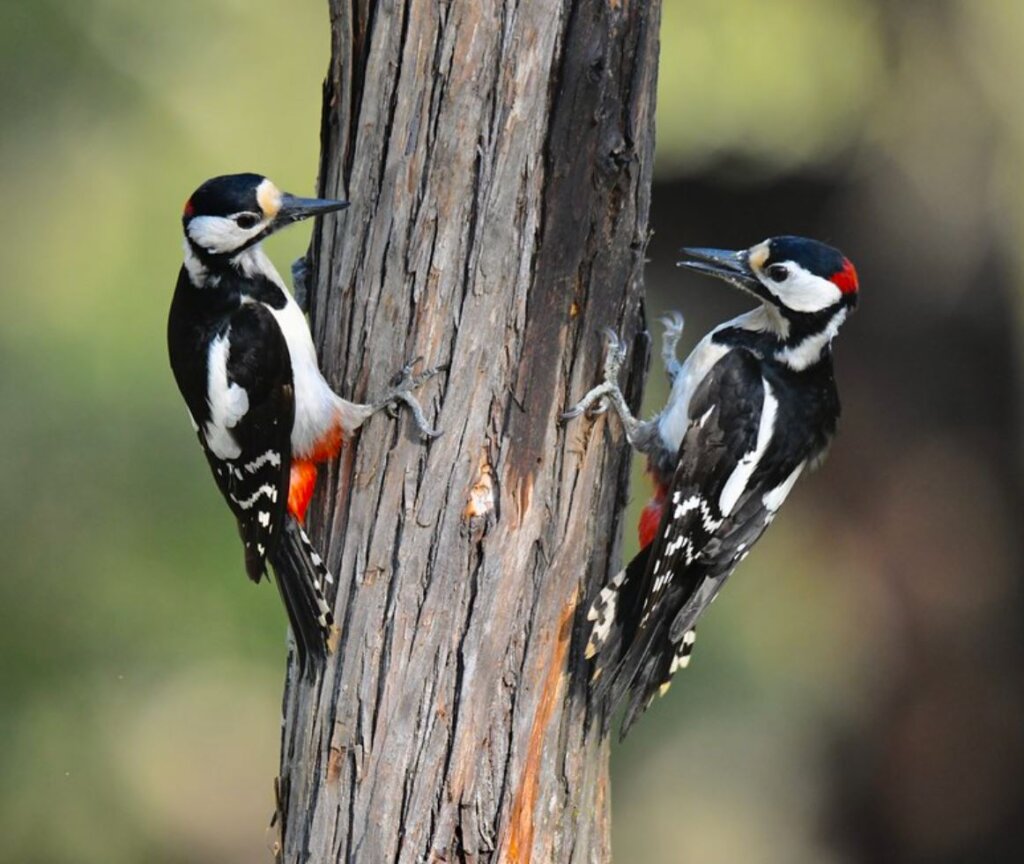 “Pica-pau malhado, ‘a namorar’, Great Spotted Woodpecker, ‘dating’” (cropped) by Luiz Lapa is licensed under CC BY 2.0.
“Pica-pau malhado, ‘a namorar’, Great Spotted Woodpecker, ‘dating’” (cropped) by Luiz Lapa is licensed under CC BY 2.0.
These skilled birds use their strong beaks to chisel into trees, searching for food and creating nest holes. Known for their drumming, they communicate with each other and advertise their territories through rhythmic hammering.
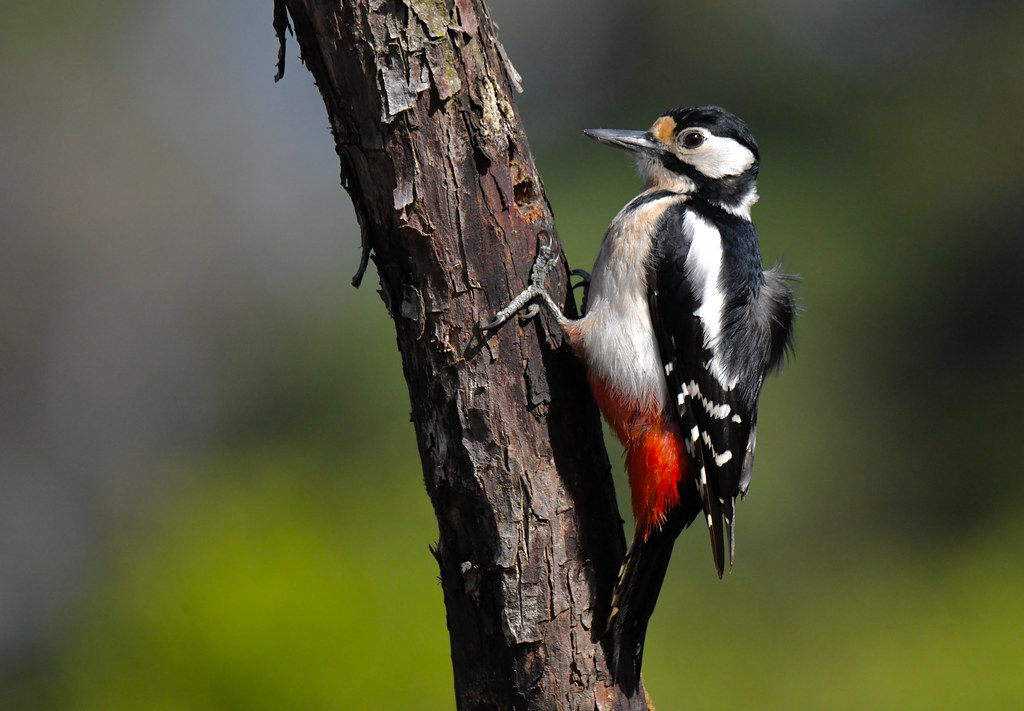 “Pica-pau malhado, Great Spotted Woodpecker” by Luiz Lapa is licensed under CC BY 2.0.
“Pica-pau malhado, Great Spotted Woodpecker” by Luiz Lapa is licensed under CC BY 2.0.
The Great spotted woodpecker is found across Eurasia, ranging from the British Isles to Japan, and in North Africa from Morocco to Tunisia.
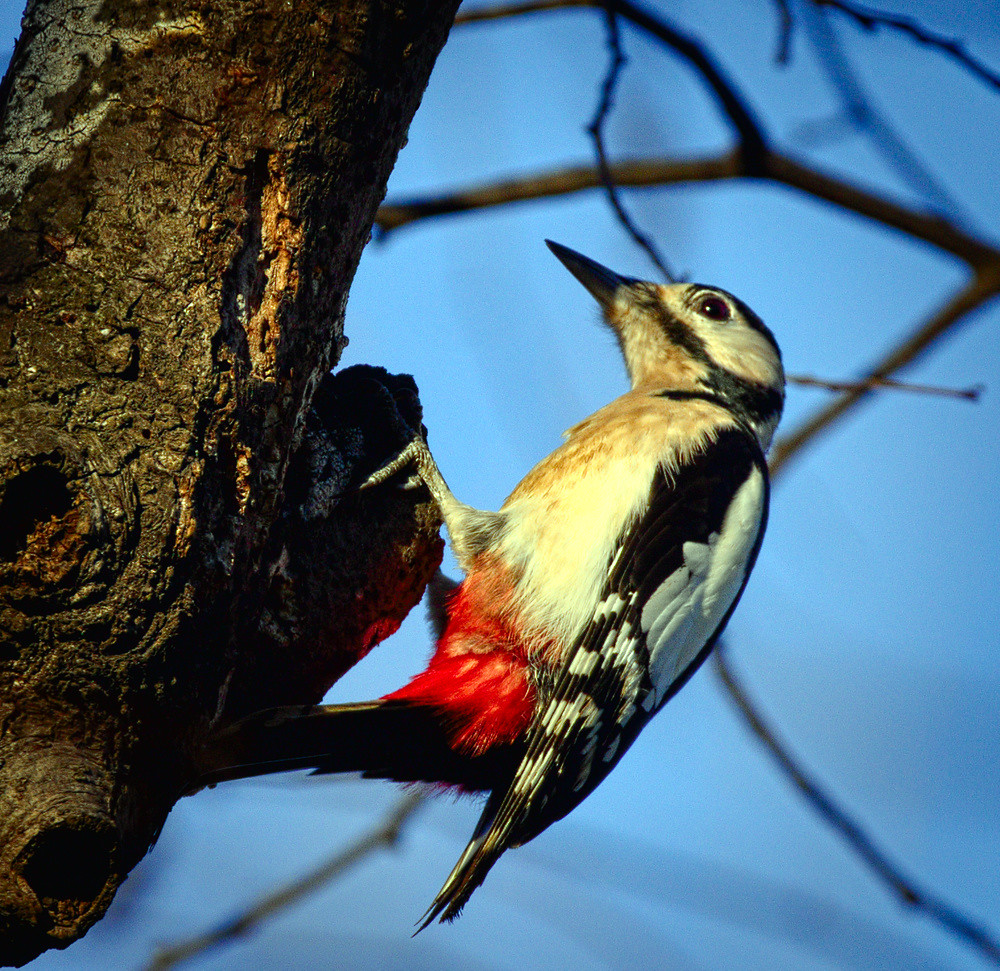 “Great spotted woodpecker” by hedera.baltica is licensed under CC BY-SA 2.0.
“Great spotted woodpecker” by hedera.baltica is licensed under CC BY-SA 2.0.
They thrive in various woodlands, including broadleaf, coniferous, or mixed forests, as well as modified habitats like parks, gardens, and olive groves.
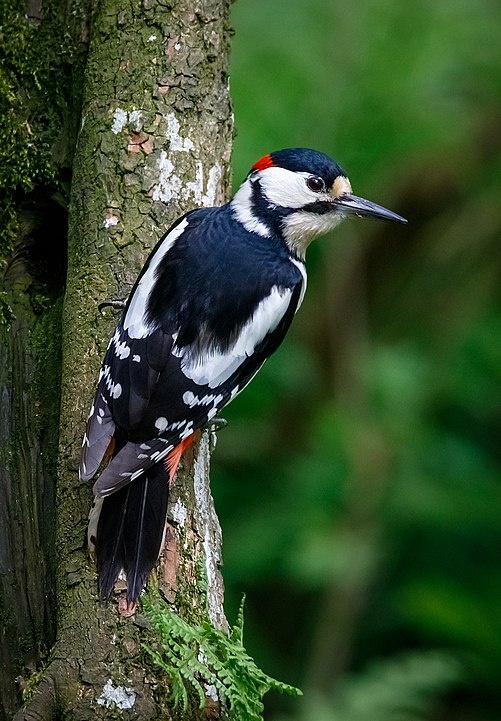 Photo courtesy of Gerry Zambonini/CC BY-SA 2.0
Photo courtesy of Gerry Zambonini/CC BY-SA 2.0
These woodpeckers are mostly solitary or occur in pairs. They spend their time climbing trees in search of food, drumming to communicate, and excavating nest holes. Great spotted woodpeckers feed on a diverse diet, including beetle larvae, insects, nuts, fruit, berries, and tree sap. They are territorial, occupying areas of about 5 hectares (12 acres), and engage in courtship displays to form pairs during the breeding season.
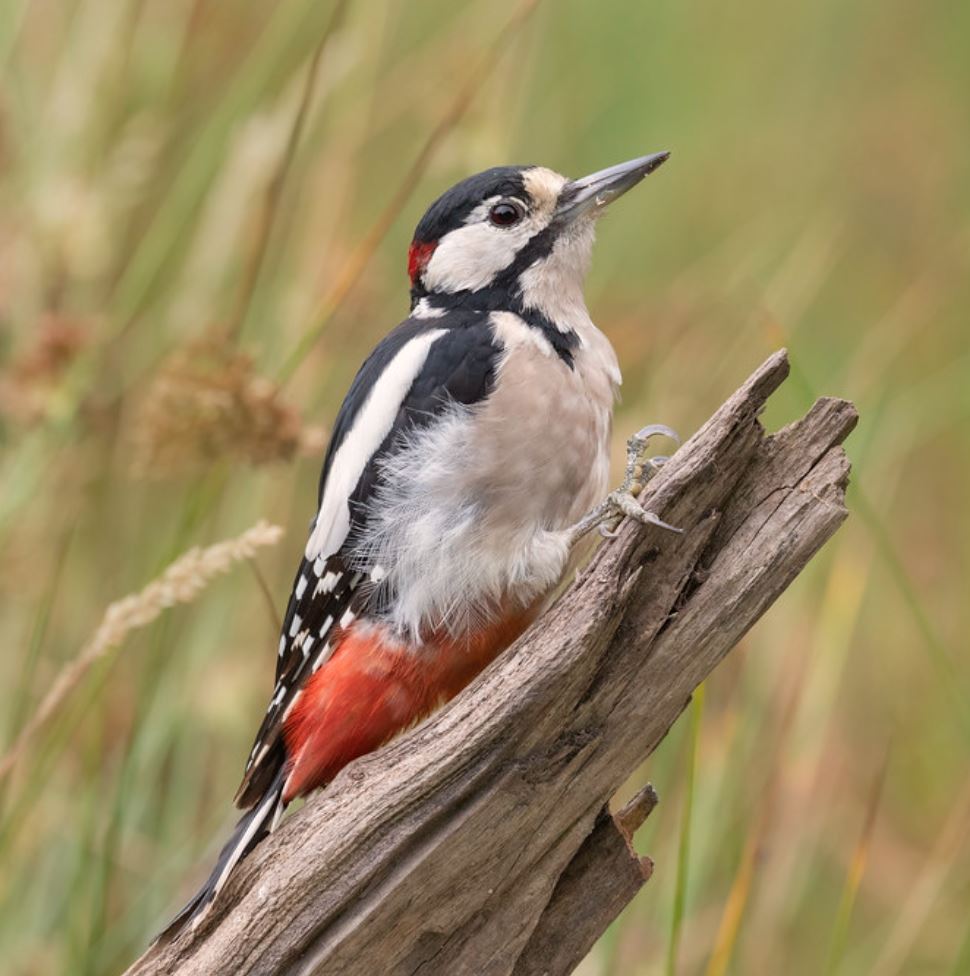 “Great Spotted Woodpecker – Denrocopos major” (cropped) by cazalegg is licensed under CC BY 2.0.
“Great Spotted Woodpecker – Denrocopos major” (cropped) by cazalegg is licensed under CC BY 2.0.
The breeding process involves both male and female excavating a new nest hole, usually in a tree, with the male chiseling most of the cavity. They lay 4-6 glossy white eggs from mid-April to June, and both parents take turns incubating the eggs. After hatching, both parents care for the altricial naked chicks, which fledge in 20-23 days. The young become reproductively mature at around one year of age.
 “Great spotted woodpecker” by hedera.baltica is licensed under CC BY-SA 2.0.
“Great spotted woodpecker” by hedera.baltica is licensed under CC BY-SA 2.0.
The Great spotted woodpecker’s population is currently increasing. Although they may face challenges due to harsh winters and habitat fragmentation, they are considered Least Concern (LC) on the IUCN Red List. The European population consists of approximately 12,900,000-19,300,000 pairs, contributing to a global total of 73,700,000-110,300,000 mature individuals.
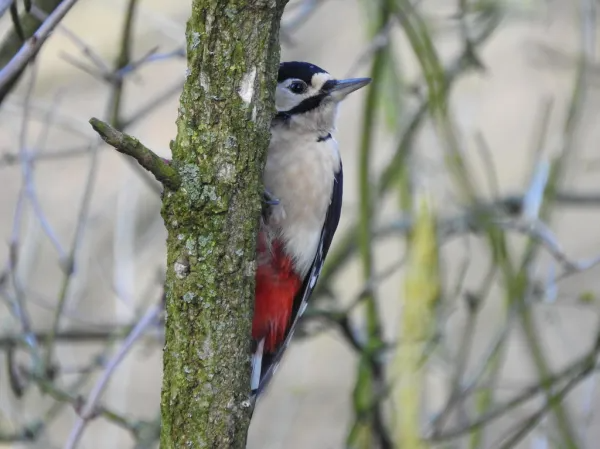 “Great Spotted Woodpecker DSCN4699” by ianpreston is licensed under CC BY 2.0.
“Great Spotted Woodpecker DSCN4699” by ianpreston is licensed under CC BY 2.0.
Listen to this bird right here:
This article uses material from Wikipedia.org which is licensed under the GNU Free Documentation License via Copyright Wikipedia. Images on this page are the sole property of the photographers (unless marked as Public Domain). Please read the license and or contact the photographers directly before using them for any purpose. Thank you all.
A Highly Gregarious, Very Vocal Bird Whose Ruby-like Flecks Shimmer Like Jewels On An Otherwise Ash-grey Body!
Please SHARE this article with all your bird-loving friends and family.

